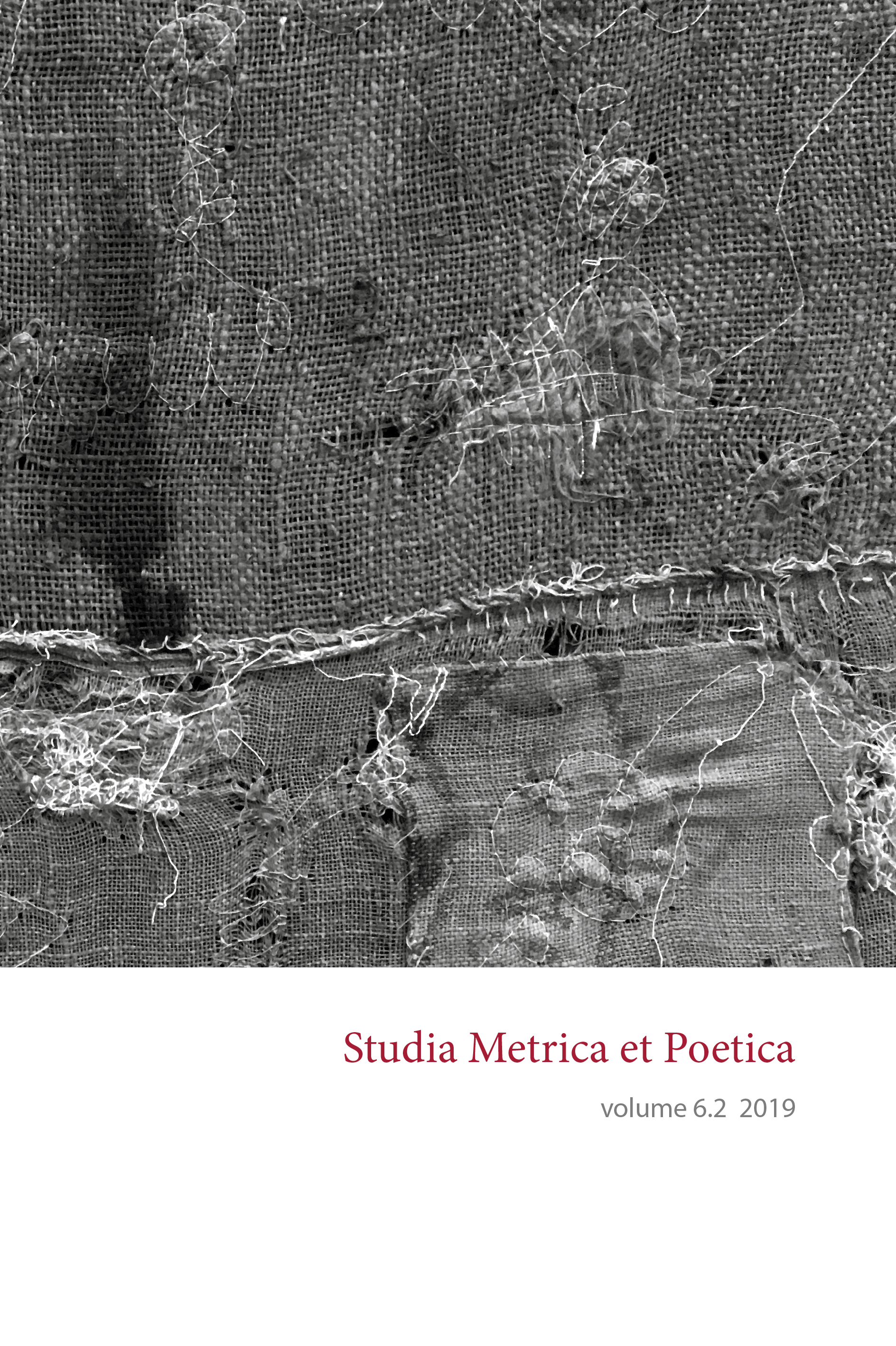Performing Mediaeval Hebrew Poetry
DOI:
https://doi.org/10.12697/smp.2019.6.2.01Keywords:
approaches to poetic rhythm, approaches to perceived qualities of poetry, rhythmical performance, performance of mediaeval Hebrew poetry, cognitive poetics, instrumental phoneticsAbstract
This is an instrumental exploration of theoretical issues related to the vocal performance of Mediaeval Hebrew pegs-and-cords meter, of which we have neither authentic recordings, nor verbal descriptions of actual performances of the time. Consequently, I am exploring only possibilities implied by poetic structures as embodied in later performances, not in actual authentic performances. But, in my earlier writings, I have extensively explored similar issues in English, Hungarian and modern Hebrew poetry, as recorded by experienced readers. The pegs-and-cords meter is a unique quantitative system based on systematic (not necessarily regular) alternation of schwa mobile and full vowels. The time ratio between the two is supposed to be 1:2, 1:3 or 1:4. Some scholars believe that in Jewish Yemenite liturgy the authentic performance has been preserved. This article is focused on one brief liturgical masterpiece by Shlomo Ibn Gabirol, submitting to computer analysis a modern recital of it, and a sung performance of a Yemenite master. Regarding the correspondence of language and versification, eleventh-century Hebrew poets explicitly distinguished between two possibilities: word endings may or may not coincide with the ending of a metric foot. I have investigated on the computer whether it is possible to convey continuation and discontinuation at the same time by a single voice, where word endings and metricfoot endings do not coincide. Neither performer observed the conflicting endings consistently, but both provided evidence that it is possible to identify the problems and solve them by vocal manipulation. In the Yemenite masters’ performances, computer measurements could not establish that the schwas are consistently shorter than the vowels. Furthermore, poetic rhythm requires the simultaneous perception of two versification levels at least: a wider unit (the verse line or a hemistich), and the metric feet that divide it. Psychologically, simultaneous presence implies being contained within the same span of short-term memory. In the Yemenite masters’ performances, the wider units exceed by far the span of short-term memory, owing to repetition of phrases and drawn-out embellishments, so that the poems’ rhythms could not be preserved. In the 16th–17th century there were Jewish musicians in Western Europe who composed liturgic music in the baroque tradition, some of it to pegs-and-cord texts. In a brief pilot I point out the differences in aesthetic conception between this baroque music and the Yemenite master. Finally, Mediaeval poets treated a schwa+vowel as a unit called “peg”. Here the question of psychological reality arises. The issue at stake is whether two immediately-observable constituents can be experienced at a more abstract level as one unit. The precedent of what generative metrists call “disyllabic occupancy of metrical position” in English poetry suggests a positive answer. “Power” at the end of an iambic line may be perceived as occupying one or two metrical positions. Computer analysis shows systematic acoustic diff erences between instances in which two syllables occupy one or two positions. We cannot know, however, what was actually the case with the peg, since we do not know how it was performed; in this respect, we have demonstrated only a possibility.


